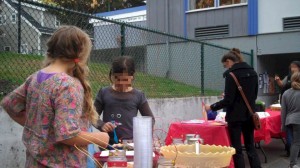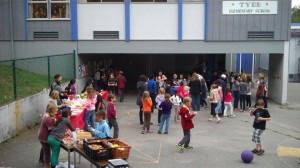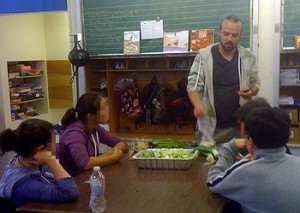Illuminate means to make bright, to shed light on, and to bring clarity to. Group 28 brings clarity and insight in their CBEL project evaluating and promoting school initiatives.

Group 28 was given the opportunity to observe and evaluate the success of Tyee Elementary’s “Child and Nature Club” (CAN club). In their CSL project they took video footage of interviews they had with kids, parents and teaching staff. Group 28 put together a video to promote the CAN Club and what it is all about: “Reconnecting with nature through sustainable practices that help maintain/improve the environment”.

The data collected by Group 28 was about what makes CAN Club successful and could be used to provide some insight on whats aspects of the Think&EatGreen at school project were successful. Furthermore, Group 28’s video and report could help with gaining funding with grant funding for the Think&EatGreen at school program. Potentially this could provide future sustainability projects factors to focus on to give them a higher chance of success. Directly, Group 28’s five could provide other communities with some motivation to take initiative and follow suit in establishing an environmental club or other sustainable practices and coalitions. Group 28’s final thoughts about the CAN club and the project is that the effort requires a lot of support. It is greatly encouraging to see that the “teaching staff and parents have shown that they are motivated and dedicated to supporting the children as much as they can. Without this kind of support, success would be difficult”.

`rtang



